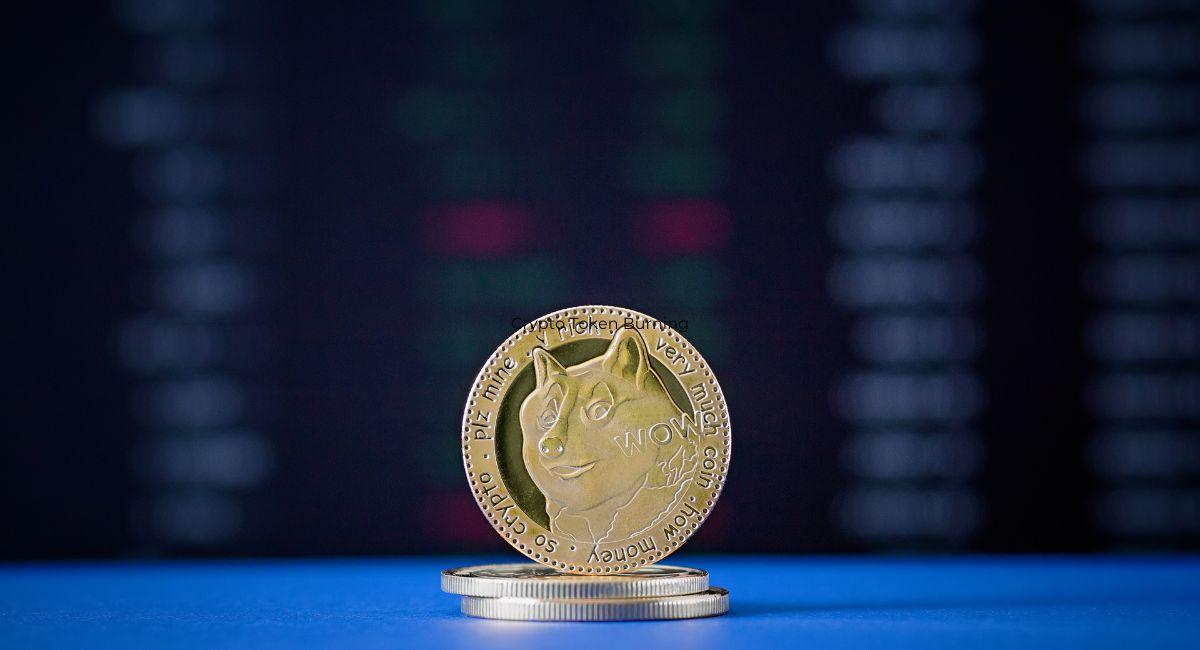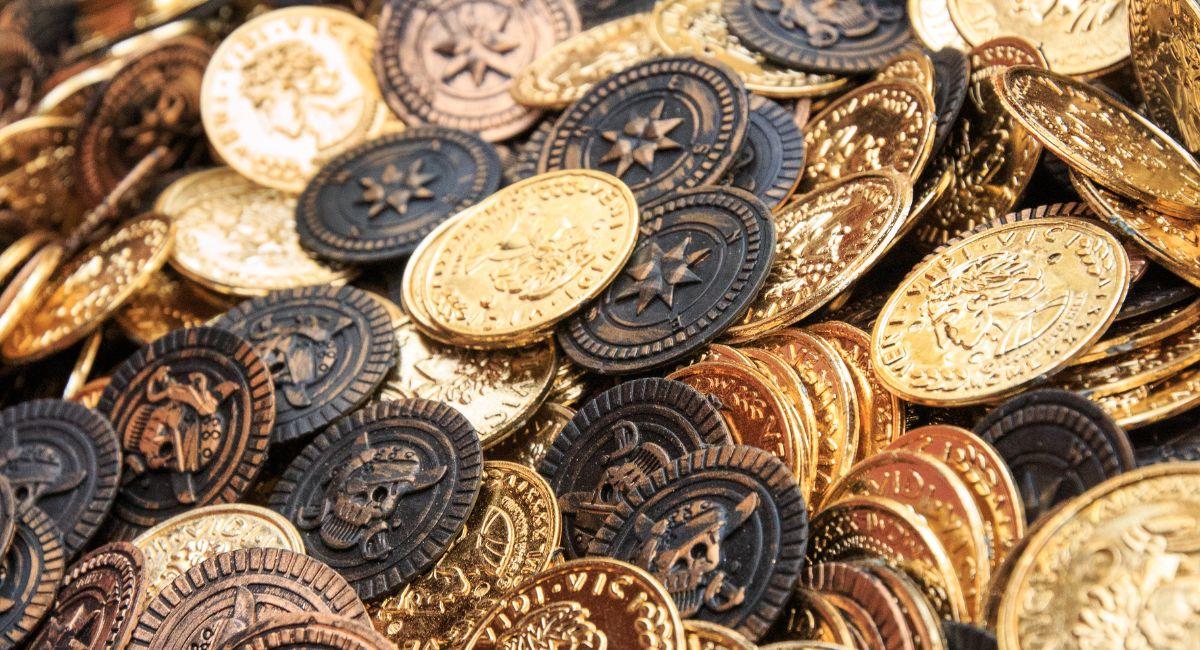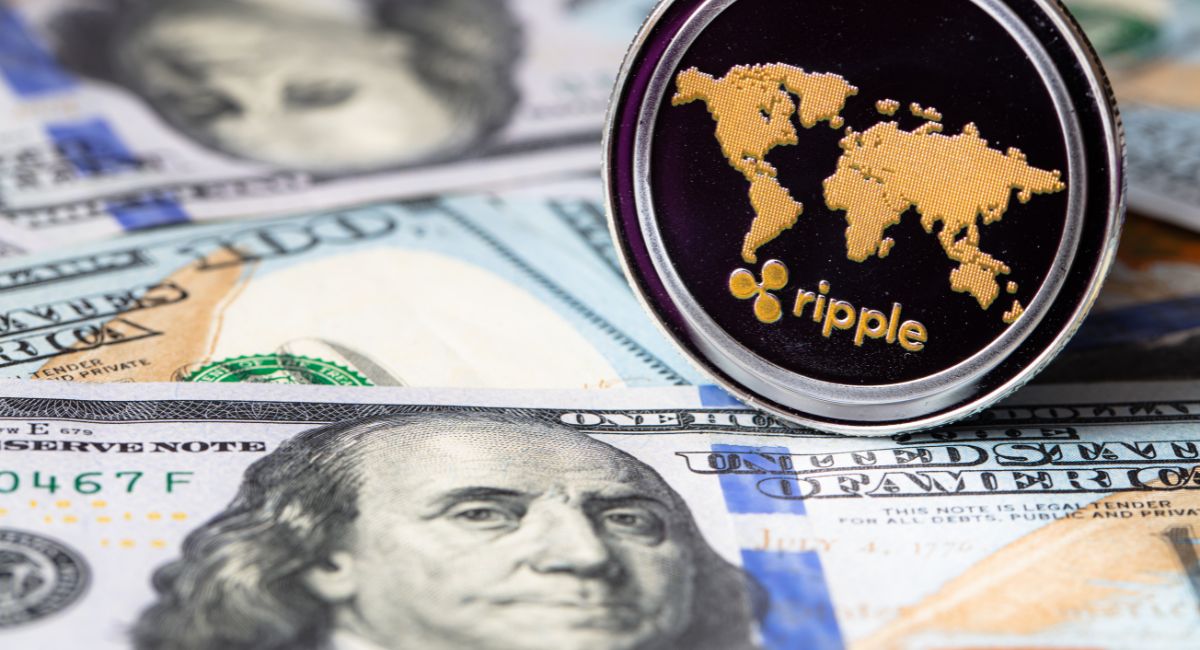Cryptocurrency, with its intricate terminology and evolving concepts, often introduces users to new terms that might seem perplexing at first. One such concept is the “burning” of crypto tokens, a practice that plays a significant role in shaping various aspects of a cryptocurrency’s ecosystem. In this exploration, we will delve into the meaning of crypto token burning in the context of cryptocurrency, its purposes, and the implications it has on the broader crypto landscape.
Defining Crypto Token Burning
In the simplest terms, token burning refers to the deliberate and permanent removal of a certain quantity of cryptocurrency tokens from circulation. This process is typically executed by sending the tokens to an address where they are rendered inaccessible, effectively taking them out of the circulating supply. While the act of burning tokens might sound counterintuitive at first glance, it serves specific purposes that are integral to the functioning and economics of a cryptocurrency.
The Purpose Behind Token Burning

Crypto token burning refers to the deliberate and permanent removal of a certain quantity of a cryptocurrency’s tokens from circulation. This process involves sending the tokens to an address where they are irreversibly locked or rendered unusable, effectively reducing the total supply. Token burning is a common practice in the cryptocurrency space, and it serves various purposes depending on the goals and strategies of the project. Here are some key purposes behind crypto token burning:
- Supply Reduction: One of the primary purposes of token burning is to reduce the overall token supply. By decreasing the circulating supply, the relative scarcity of the remaining tokens may increase, potentially impacting the token’s value. This scarcity can create a sense of rarity and exclusivity, which might be appealing to investors and users.
- Deflationary Mechanism: Token burning is often implemented as a deflationary measure. In traditional economies, deflation is typically associated with a decrease in the general price level of goods and services. In the context of cryptocurrencies, deflation can occur when the token supply is reduced, potentially leading to an increase in the value of each remaining token.
- Economic Incentives: Token burning can be used to create economic incentives for token holders. Some projects burn tokens as part of a reward or incentive program. For example, a platform might burn a percentage of the fees collected, providing an indirect benefit to token holders by reducing the overall supply and potentially increasing the value of their holdings.
- Stabilizing Token Value: In some cases, token burning is employed to stabilize or increase the value of a cryptocurrency. By actively managing the token supply, projects aim to achieve a more predictable and controlled appreciation in value, which can be attractive to both investors and users.
- Community Engagement: Token burning can be used as a tool for community engagement. Some projects involve their community in the decision-making process regarding token burns, allowing token holders to vote on proposals or participate in governance mechanisms that determine the frequency and quantity of token burning.
- Compliance with Regulatory Standards: In certain jurisdictions, reducing the token supply through burning may help meet regulatory requirements. Some regulations or guidelines may stipulate specific limits on the total supply of tokens, and token burning can be a proactive measure to ensure compliance.
- Project Development Funding: In some cases, tokens are burned as a way to allocate funds for project development. Instead of selling tokens on the market to raise funds, projects may burn a portion of the tokens, effectively reducing the supply while indirectly contributing to the project’s financial resources.
It’s essential to note that the effectiveness of token burning in achieving these purposes can vary, and its impact on a project’s success depends on various factors, including the project’s goals, market dynamics, and community response. Additionally, token burning is just one of many strategies that projects may use to manage their tokenomics and drive value for their ecosystems.
Methods of Crypto Token Burning
 Crypto token burning can be implemented using various methods, each with its own mechanics and implications. The chosen method often depends on the goals of the project and the desired outcomes. Here are some common methods of crypto token burning:
Crypto token burning can be implemented using various methods, each with its own mechanics and implications. The chosen method often depends on the goals of the project and the desired outcomes. Here are some common methods of crypto token burning:
- Proof of Burn (PoB): Proof of Burn is a consensus algorithm where participants demonstrate ownership of tokens by sending them to a designated address with the intention of destroying (burning) them. The act of burning tokens serves as proof of the participant’s commitment to the network. While PoB is not as widely used as Proof of Work (PoW) or Proof of Stake (PoS), it has been experimented with in certain blockchain projects.
- Transaction Fee Burning: Some projects implement token burning by using a portion of transaction fees. When users engage in transactions on the platform, a percentage of the fees generated is used to buy and subsequently burn the native tokens. This method not only reduces the total token supply but also aligns the economic incentives of users with the long-term value of the token.
- Buy-and-Burn Programs: Projects may use funds from their treasury or reserve to periodically buy tokens from the market and burn them. This approach is often employed by projects aiming to allocate a portion of their revenues or resources to reduce the circulating supply and create value for existing token holders.
- Smart Contract Burning: Tokens can be burned by sending them to a specific smart contract designed for that purpose. This contract is programmed to accept incoming tokens and render them permanently unusable. This method provides a straightforward and transparent way to execute token burning without relying on external entities.
- Community Voting: Some projects involve their community in the decision-making process for token burning. Through decentralized governance mechanisms, token holders can propose and vote on burning initiatives. This approach ensures community engagement and allows participants to have a say in the economic policies of the project.
- Event-Driven Burning: Projects may choose to burn tokens in response to specific events, such as reaching a milestone, achieving a certain level of adoption, or completing a major upgrade. This method adds a dynamic element to token burning, tying it to the project’s progress or success.
- Proof of Stake (PoS) and Delegated Proof of Stake (DPoS): Some PoS and DPoS blockchain networks incorporate token burning as part of their consensus mechanism. Validators or block producers may be required to lock up or burn a certain amount of tokens as collateral to participate in block validation. This ensures that participants have a vested interest in the network’s security.
- Token Swap and Burn: In certain cases, projects may initiate a token swap where holders exchange their old tokens for new ones, often with an adjusted supply. The old tokens are then burned to permanently remove them from circulation.
It’s essential to note that the effectiveness of crypto token burning methods depends on factors such as the project’s governance model, tokenomics, and community dynamics. Additionally, transparency and clear communication are crucial to maintaining trust and understanding among token holders during the crypto token-burning process.
Also, read- Top 10 Thumb Rules Of Analyzing And Investing In Cryptocurrency
Implications for Investors and Projects
 Crypto token burning can have significant implications for both investors and projects, influencing various aspects of the token’s ecosystem. Here are some key implications for investors and projects:
Crypto token burning can have significant implications for both investors and projects, influencing various aspects of the token’s ecosystem. Here are some key implications for investors and projects:
Implications for Investors:
- Supply and Demand Dynamics:
- Positive Impact: Crypto token burning reduces the overall supply, potentially increasing scarcity. If demand remains constant or increases, this reduction in supply can lead to an appreciation in the token’s value.
- Negative Impact: If the burning is insufficient to create a noticeable scarcity or if demand decreases, the impact on the token’s value may be limited.
- Value Appreciation:
- Positive Impact: Investors may benefit from an increase in the token’s value due to reduced supply. This can enhance the overall return on investment for existing token holders.
- Negative Impact: If the market perceives the token burning as insignificant or if other negative factors outweigh the positive effects, the impact on value appreciation may be limited.
- Incentives and Loyalty:
- Positive Impact: crypto token burning can create economic incentives for long-term holding. Investors may be more inclined to hold their tokens, expecting potential future value appreciation resulting from reduced supply.
- Negative Impact: If the burning strategy is not communicated effectively or if investors perceive it as a one-time event with limited future impact, the incentive for long-term holding may diminish.
- Community Engagement:
- Positive Impact: Token burning can be a community-driven initiative, enhancing engagement and participation. If investors have a say in the burning process through governance mechanisms, it can strengthen the community’s bond with the project.
- Negative Impact: Lack of transparency or community involvement in the burning process may lead to dissatisfaction among investors.
Implications for Projects:
- Economic Model:
- Positive Impact: Token burning can be integrated into the economic model to align incentives and promote scarcity. Well-designed tokenomics with a clear burning strategy can attract investors and contribute to the project’s long-term success.
- Negative Impact: Poorly executed or communicated token burning strategies may result in confusion, skepticism, and a potential loss of investor confidence.
- Market Perception:
- Positive Impact: Successful and well-publicized token burns can create positive market sentiment. The perception of a project actively managing and enhancing the value of its tokens can attract new investors.
- Negative Impact: If the market perceives token burning as a desperate attempt to pump the token’s price without real utility or value, it may lead to skepticism and negative reactions.
- Funding Mechanism:
- Positive Impact: Crypto token burning can be used as a funding mechanism, allocating resources from the project’s treasury to enhance value for token holders. This can contribute to the project’s sustainability and development.
- Negative Impact: If the project relies solely on token burning without a clear and viable business model, it may raise concerns about long-term sustainability.
- Community Trust:
- Positive Impact: Transparent and community-involved token burning can strengthen trust. Projects that actively engage their community in decision-making processes, including burning initiatives, are likely to build stronger, more loyal communities.
- Negative Impact: Lack of transparency, unclear communication, or unexpected changes in burning strategies can erode trust within the community.
The implications of crypto token burning for investors and projects are multifaceted. Successful token burning strategies require careful planning, effective communication, and alignment with the project’s overall goals and vision. Transparency and community engagement play crucial roles in ensuring that the impact of token burning is positive and contributes to the sustainable growth of the project.
Examples from the Crypto Space

Certainly, many cryptocurrencies across the crypto space have implemented token burning mechanisms as part of their economic models or strategies. Here are some notable examples:
- Binance Coin (BNB):
- Token Burning Mechanism: Binance, one of the largest cryptocurrency exchanges globally, regularly conducts token burns of its native utility token, Binance Coin (BNB). The exchange commits to using 20% of its quarterly profits to buy back and burn BNB tokens until 50% of the total supply is destroyed.
- Purpose: The burning of BNB aims to create scarcity and enhance the value of the token over time. It also serves as a way to share the success of the platform with its token holders.
- Ethereum (ETH):
- Upcoming Transition to Ethereum 2.0: Ethereum, a leading blockchain platform, is in the process of transitioning from a proof-of-work (PoW) to a proof-of-stake (PoS) consensus mechanism with Ethereum 2.0. As part of this transition, Ether (ETH) holders are expected to lock up a certain amount of ETH as collateral, effectively removing it from circulation.
- Purpose: The move to Ethereum 2.0 aims to improve scalability, security, and sustainability. While not a traditional token burning mechanism, the locking up of ETH in staking contributes to a reduction in circulating supply.
- Ripple (XRP):
- Escrowed XRP Release: Ripple, the company behind XRP, employs an escrow mechanism to release a certain amount of XRP into circulation periodically. Any unused XRP from each escrow release is returned to escrow, effectively creating the potential for perpetual token burning.
- Purpose: The escrow mechanism ensures a predictable and controlled release of XRP into the market, preventing large amounts from flooding the market at once and contributing to the reduction of circulating supply over time.
- Tron (TRX):
- Regular Token Burns: Tron, a blockchain platform known for its focus on decentralized applications (DApps) and smart contracts, conducts regular token burns of its native cryptocurrency, TRX. The burns are typically a result of transaction fees on the network.
- Purpose: Token burns in Tron aim to reduce the total supply and create scarcity, potentially influencing the value of TRX. The process aligns with the project’s goal of optimizing its economic model.
- Huobi Token (HT):
- Buyback and Burn Program: Huobi Token (HT), the native utility token of the Huobi exchange, operates on a buyback and burn program. Huobi commits to using 20% of its quarterly revenue to buy back HT from the market and subsequently burn it.
- Purpose: The program is designed to reward HT holders by reducing the token’s supply and potentially increasing its value. It aligns the interests of the exchange and token holders.
- VeChain (VET):
- Economic Node Program: VeChain, a blockchain platform focusing on supply chain management and enterprise solutions, operates an Economic Node program where participants are required to hold a certain amount of VET tokens. The nodes receive rewards, and a portion of these rewards is used to buy and burn VET tokens.
- Purpose: The burning of VET contributes to reducing the overall supply and aims to enhance the token’s value over time.
These examples illustrate the diverse ways in which token burning mechanisms are implemented in the crypto space. Whether through regular buybacks, transaction fee burns, or specific economic models, token burning has become a versatile tool for projects to manage their tokenomics and engage with their communities.
Conclusion
In conclusion, token burning in cryptocurrency is a deliberate and strategic practice that goes beyond merely reducing token supply. It influences the economics, sustainability, and value proposition of a cryptocurrency. As the crypto space continues to evolve, the concept of burning tokens is likely to remain a dynamic and integral aspect of shaping the future of various blockchain projects. Investors, developers, and enthusiasts alike must comprehend the nuances of token burning to make informed decisions in this rapidly evolving financial landscape.
Stay informed with daily updates from Blockchain Magazine on Google News. Click here to follow us and mark as favorite: [Blockchain Magazine on Google News].


 Bitcoin
Bitcoin  Ethereum
Ethereum  Tether
Tether  Solana
Solana  XRP
XRP  Dogecoin
Dogecoin  Cardano
Cardano  USDC
USDC  Lido Staked Ether
Lido Staked Ether  TRON
TRON  Avalanche
Avalanche  Shiba Inu
Shiba Inu  Wrapped stETH
Wrapped stETH  Wrapped Bitcoin
Wrapped Bitcoin  Toncoin
Toncoin  Stellar
Stellar  Polkadot
Polkadot  Bitcoin Cash
Bitcoin Cash  Chainlink
Chainlink  Sui
Sui  WETH
WETH  Pepe
Pepe  LEO Token
LEO Token  Litecoin
Litecoin  NEAR Protocol
NEAR Protocol  Aptos
Aptos  Uniswap
Uniswap  Wrapped eETH
Wrapped eETH  Hedera
Hedera  Internet Computer
Internet Computer  Cronos
Cronos  USDS
USDS  Ethereum Classic
Ethereum Classic  POL (ex-MATIC)
POL (ex-MATIC)  Render
Render  Bittensor
Bittensor  Ethena USDe
Ethena USDe  Bonk
Bonk  WhiteBIT Coin
WhiteBIT Coin  Artificial Superintelligence Alliance
Artificial Superintelligence Alliance  MANTRA
MANTRA  Dai
Dai  dogwifhat
dogwifhat  Arbitrum
Arbitrum  Cosmos Hub
Cosmos Hub  Stacks
Stacks  Filecoin
Filecoin 
 Crypto token burning can be implemented using various methods, each with its own mechanics and implications. The chosen method often depends on the goals of the project and the desired outcomes. Here are some common methods of crypto token burning:
Crypto token burning can be implemented using various methods, each with its own mechanics and implications. The chosen method often depends on the goals of the project and the desired outcomes. Here are some common methods of crypto token burning: Crypto token burning can have significant implications for both investors and projects, influencing various aspects of the token’s ecosystem. Here are some key implications for investors and projects:
Crypto token burning can have significant implications for both investors and projects, influencing various aspects of the token’s ecosystem. Here are some key implications for investors and projects:


